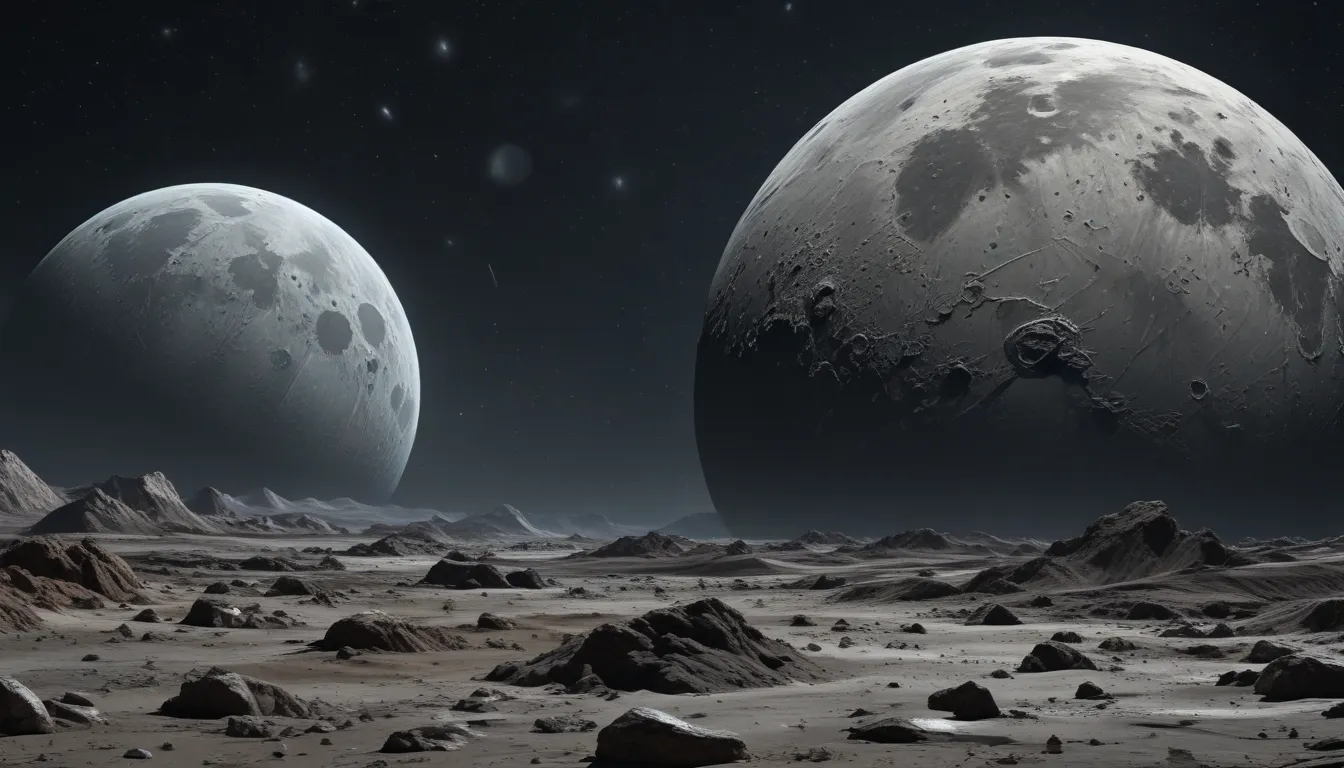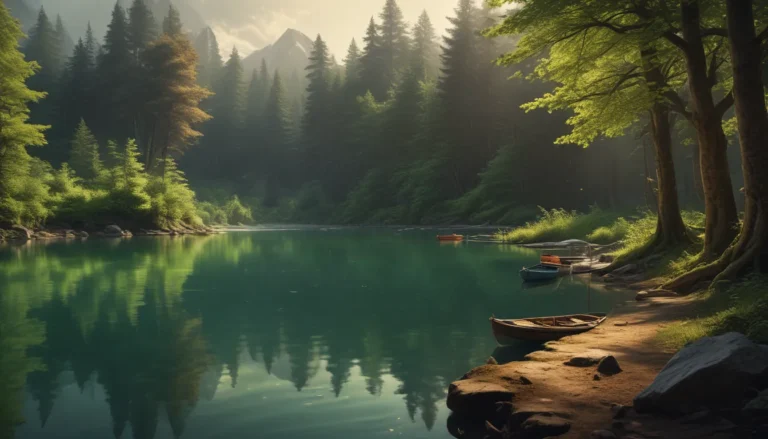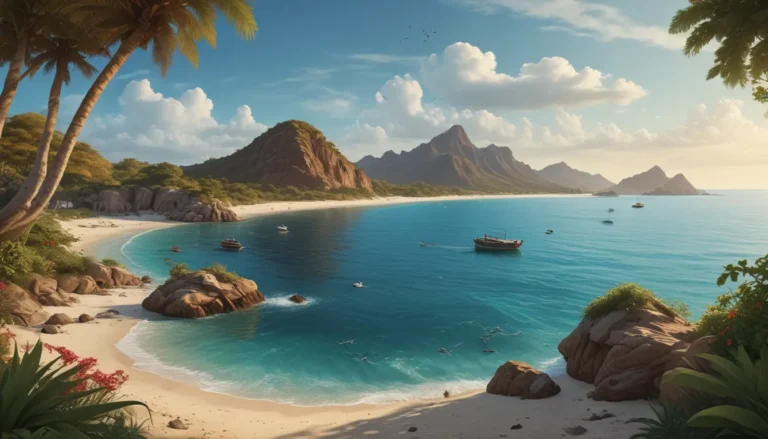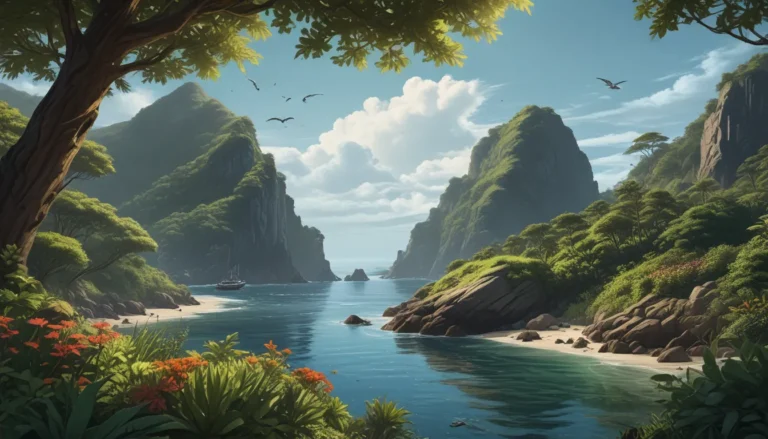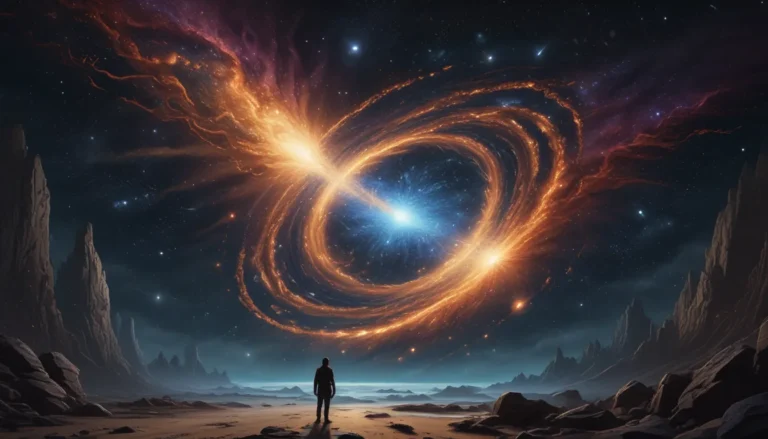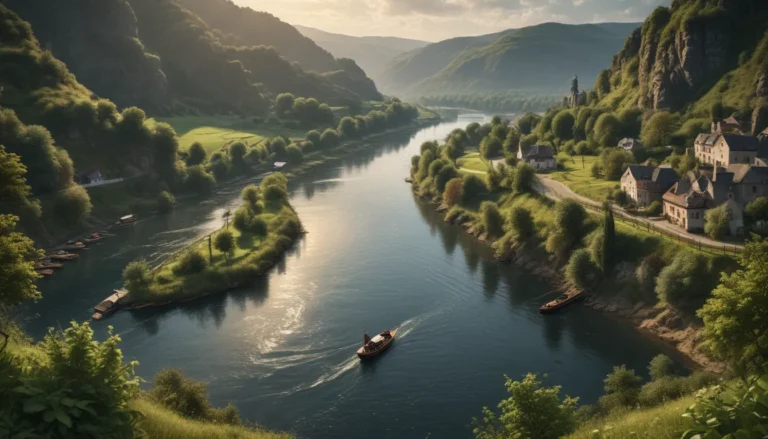The pictures we use in our articles might not show exactly what the words say. We choose these pictures to make you interested in reading more. The pictures work together with the words but don’t take their place. The words still tell you the important facts.
The moon, with its captivating beauty and enigmatic allure, has always fascinated humanity. From ancient myths to modern scientific explorations, the lunar surface continues to intrigue us with its mysteries. In this article, we will embark on a journey to uncover 19 astonishing facts about the lunar surface that will leave you awe-inspired. From the discovery of water molecules to the presence of moonquakes, the moon's rugged terrain holds many secrets waiting to be discovered. So, fasten your seatbelts and get ready for an enlightening exploration of the wonders of Earth's closest celestial neighbor.
Unveiling the Lunar Landscape
-
Regolith: The lunar surface is covered in a layer of fine dust called regolith, composed of small rock particles and dust created by billions of years of meteoroid impacts.
-
Mountains and Valleys: Similar to Earth, the moon boasts mountain ranges and deep valleys. The tallest mountain on the moon, Mons Huygens, towers at a staggering height of 4,700 meters.
-
Extreme Temperatures: The lunar surface experiences dramatic temperature fluctuations, with daytime highs reaching scorching 260 degrees Fahrenheit (127 degrees Celsius) and nighttime lows dropping to bone-chilling -280 degrees Fahrenheit (-173 degrees Celsius).
-
Cratered Landscape: Thousands of craters dot the lunar surface, formed by relentless space debris bombardment due to the moon's lack of atmosphere.
-
Barren Terrain: Unlike Earth, the moon lacks an atmosphere and liquid water, making it a harsh and inhospitable environment for life.
Lunar Wonders and Phenomena
-
Footprints: Astronauts left their footprints on the lunar surface during the Apollo missions, which remain preserved due to the absence of wind erosion.
-
Sunlit Reflection: The moon's bright appearance in the night sky is due to its surface reflecting sunlight back to Earth, creating the mesmerizing glowing orb we see.
-
Rilles and Wrinkle Ridges: The moon's surface is scarred by deep cracks called rilles and sinuous formations known as wrinkle ridges, formed by ancient volcanic activity and tectonic forces.
-
Moonquakes: While less frequent and intense than earthquakes, the moon experiences moonquakes caused by tidal forces from Earth's gravitational pull.
-
Diverse Rocks: The lunar surface is composed of various rocks, including basalt, anorthosite, and breccia, offering valuable insights into the moon's geological history.
Mysteries of the Lunar Landscape
-
Dark Maria: Large, dark areas on the moon's surface known as maria are solidified basaltic lava flows, not bodies of water as commonly believed.
-
Helium-3 Deposits: Certain areas of the lunar surface contain high concentrations of helium-3, a rare isotope with potential for nuclear fusion.
-
Magnetic Anomalies: Some regions of the moon exhibit unexpected magnetic anomalies, likely remnants of past volcanic activity or mineral presence with magnetic properties.
-
Micrometeorite Impact: The moon's surface is constantly bombarded by tiny micrometeoroids, creating impact craters and flashes of light known as lunar transient phenomena.
Robotic Explorations and Future Missions
-
Robotic Missions: Over the years, numerous unmanned spacecraft have been sent to explore the lunar surface, providing crucial data and images to enhance our understanding.
-
Lunar Regolith: A layer of loose soil and dust called lunar regolith covers the moon's solid bedrock, ranging in depth from a few meters to several meters in certain areas.
-
Bright Rays and Highlands: Some craters exhibit bright rays from material ejections, while the bright highlands composed of anorthosite rock offer insights into the moon's early history.
A Glimpse into the Lunar Legacy
As we unravel the mysteries of the lunar surface, we witness a world of extremes, beauty, and scientific marvels waiting to be explored. From the barren regolith to the rugged mountains and deep valleys, the moon's surface holds a treasure trove of knowledge about our celestial neighbor. Whether you gaze up at the moon in wonder or dream of stepping foot on its ancient terrain, the lunar surface remains an eternal source of fascination and discovery.
Conclusion: Embracing Lunar Exploration
The lunar surface stands as a testament to human curiosity and scientific exploration, offering a window into the wonders of our universe. As we uncover the secrets of Earth's closest celestial neighbor, we pave the way for future missions and discoveries in space exploration. With plans for sustainable lunar presence and ambitious goals of returning humans to the moon, the lunar landscape beckons us to embark on new frontiers of knowledge and discovery.
FAQs: Exploring Lunar Queries
-
Composition: The lunar surface primarily consists of regolith, a mixture of rocks and dust particles like basalt, anorthosite, and breccia.
-
Visibility: The lunar surface is visible from Earth with the naked eye, appearing as a bright object in the night sky that changes with lunar phases.
-
Resources: Recent studies have identified valuable resources like water ice in shadowed regions of the moon, essential for sustaining future human missions.
-
Distance: The average distance between Earth and the moon's surface is approximately 238,900 miles (384,400 kilometers).
-
Apollo Missions: Astronauts from the Apollo missions in the 1960s and 1970s walked on the lunar surface, collecting samples and conducting experiments.
-
Future Missions: Space agencies and private companies have plans to return to the moon for sustainable exploration and potential human missions.
-
Atmosphere: The moon does not have a significant atmosphere, only an extremely thin exosphere with trace gases like helium and neon.
-
Temperature: Lunar surface temperatures can range from scorching 260 degrees Fahrenheit (127 degrees Celsius) during the day to freezing -280 degrees Fahrenheit (-173 degrees Celsius) at night.
-
Landmarks: The lunar surface features prominent landmarks such as craters, mountain ranges, and maria formed by ancient volcanic activity.
-
Stargazing: Stars are visible from the lunar surface, even during daylight, due to the lack of atmospheric scattering like on Earth.
Dive deeper into lunar exploration by exploring the incredible feats of the lunar module that made moon landings possible. Discover the history of humanity's first steps on another world and unravel the effects of space weathering on the moon's ancient surface and beyond!
Discover the Wonders of the Lunar Surface
As we gaze up at the moon's radiant glow in the night sky, let us remember the awe-inspiring wonders that lie beneath its captivating surface. From regolith-covered plains to rugged mountain ranges, the lunar landscape holds a wealth of discoveries waiting to be unearthed. Join us on this enlightening journey through the mysteries of the lunar surface and embrace the spirit of exploration and wonder that defines our quest to unravel the secrets of the cosmos.
